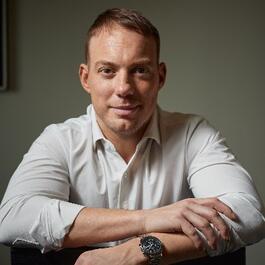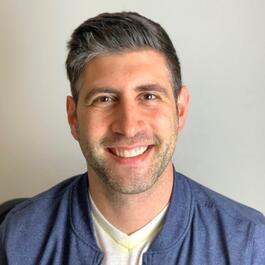
335: Deconstructing The Art & Science Of Public Speaking With Jay Acunzo
The Learning Leader Show With Ryan Hawk Text LEARNERS to 44222 Full show notes can be found at www.LearningLeader.com Episode #335: Deconstructing The Art & Science Of Public Speaking With Jay Acunzo This is another bonus episode with my friend, Jay Acunzo. We deconstruct the art and science of public speaking in this bonus episode. "I'm trying to help you see something different that fundamentally changes your work for the better." Notes: The goal: Help your audience see something different that fundamentally changes their work for the better. Everything I'm doing (when speaking) is helping you get from where you're at to where you want to be. How to put a talk together: Prompt driven -- Anticipate the questions that will be asked and answer them. The coaching of Andrew Davis for Jay... "He's been really instrumental in helping me build a speaking business "The Dialog Outline" -- You break up a talk you're giving into it's component pieces making it a modular talk. "You're sharing the things others need to hear at the right moment they need to hear it... So they're anticipating what comes next..." Put yourself in situations to "talk out your thoughts" to generate ideas... "Learn through speaking." Process to prepare: The value of rehearsal -- Is it needed? How much? Memorization vs. knowing your content cold → How to not sound like a robot, but still remember what to say? Visual aids (PowerPoint, Keynote) -- "If I need the slides, I'm not ready." - Jay. Slides should be use to reinforce the message. You should never need to look at them. They are there to be additive to your message for your audience. The 30 seconds before going on stage? The optimal self talk... Interesting to hear the dramatic difference between Jay's approach and mine... Get emotionally cross-faded. "Wow, I get to do this. This is so cool." (The words Jay says to himself the instant before he goes on stage." And then... "Watch this." Assuring people that "I'm going to have some serious fun." "Get ready... I'm about to put on a show." -- Use your excitement and confidence to serve the audience. How to start a speech: What to do and what NOT to do: The first part of the speech is the shared goal - "What does everyone in the room want?" "The Vanguard." - The front line you send out to begin the attack... Do NOT start by saying, "I'm so excited to be here." Of course you're excited. Don't waste that time. It's too important to wander into the speech. Speaking Framework: (Mine: story → science → practical application) Story -- People remember stories Science -- Empirical evidence/data to support the story Application -- This is what it means for YOU Storytelling -- How to become a better storyteller? Great storytellers can rule the world... Give a "feature story" -- And then reveal your hidden truth. And then break it down into a methodology. Engaging the audience - some speakers walk in the crowd, some ask questions regularly… The optimal ways to engage the audience The element of surprise -- How to create 'moments' for the audience (surprise, 'aha' etc)? How to ensure you are enlightening them and not just regurgitating stuff they already know... The keys to Q & A and why it should never be the last thing you do on stage... Film the audience to see their reaction to your message... Study that to see what hits. How to add humor appropriately Coaching/feedback -- The intentional actions taken to ensure improvement. Why you should have a coach. Who is your kitchen cabinet? For corporate world mid-level managers who have to do QBR's (quarterly business reviews) -- How can they make those more exciting? (Most are dreadfully boring full of random stats, charts, bar graphs, etc) Study the 'intentionality' of stand up comedians. Everything you say is for a specific reason. Be thoughtful and intentional with your actions. Persuasive presentations have logos, ethos, and pathos (from Talk Like TED) Logos - Backing up your argument with data Ethos - Credibility of the speaker Pathos - Establish an emotional connection
From "The Learning Leader Show With Ryan Hawk"




Comments
Add comment Feedback